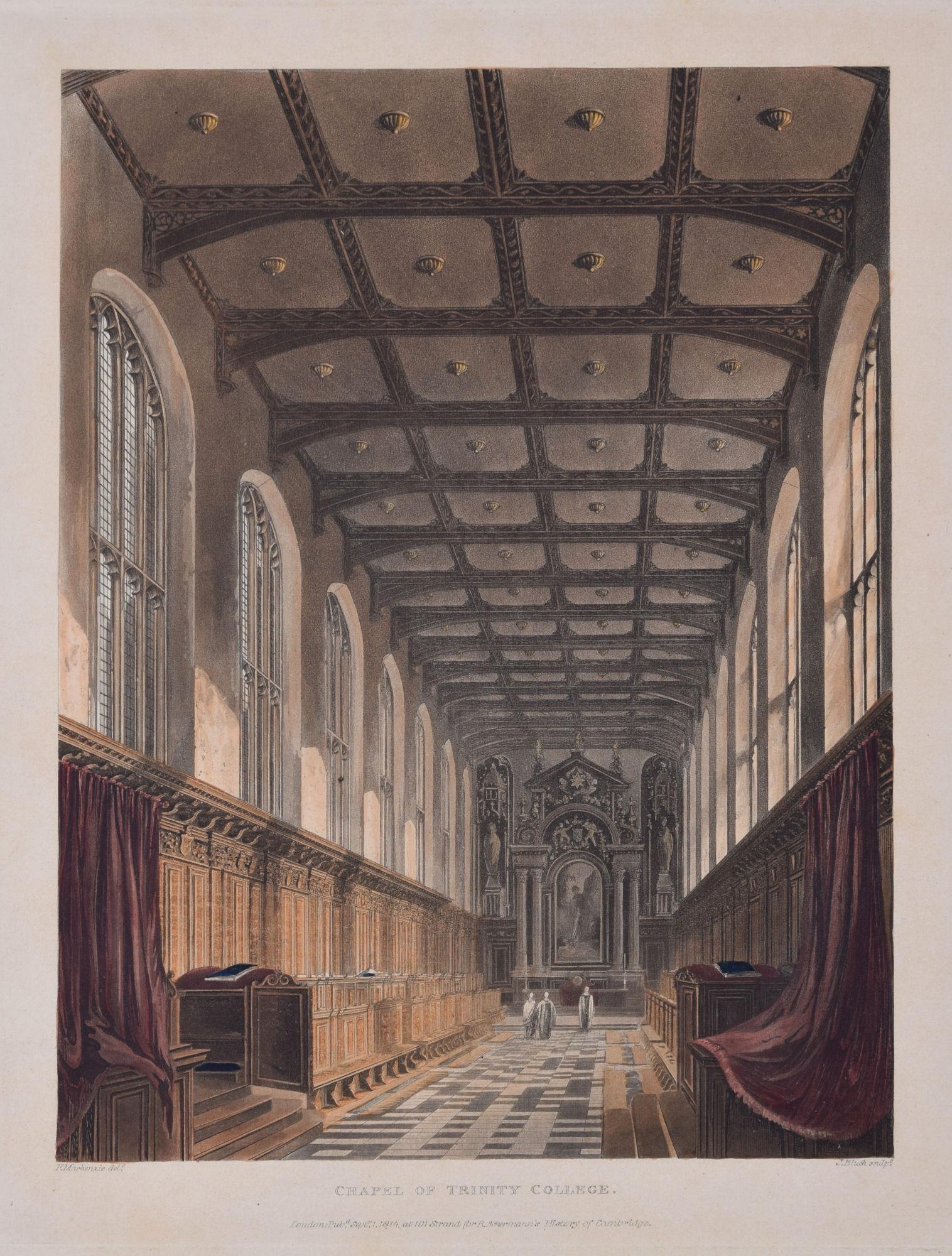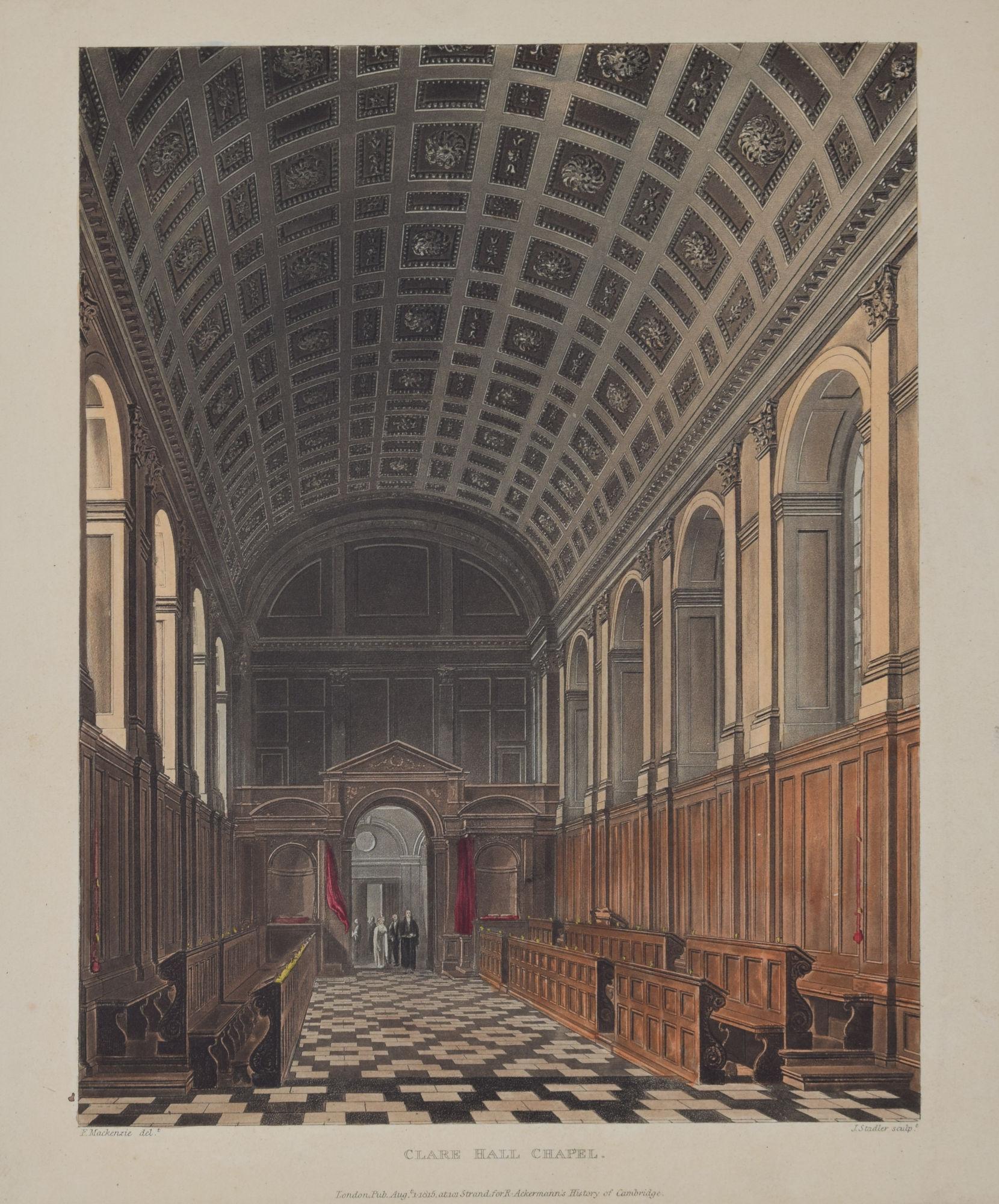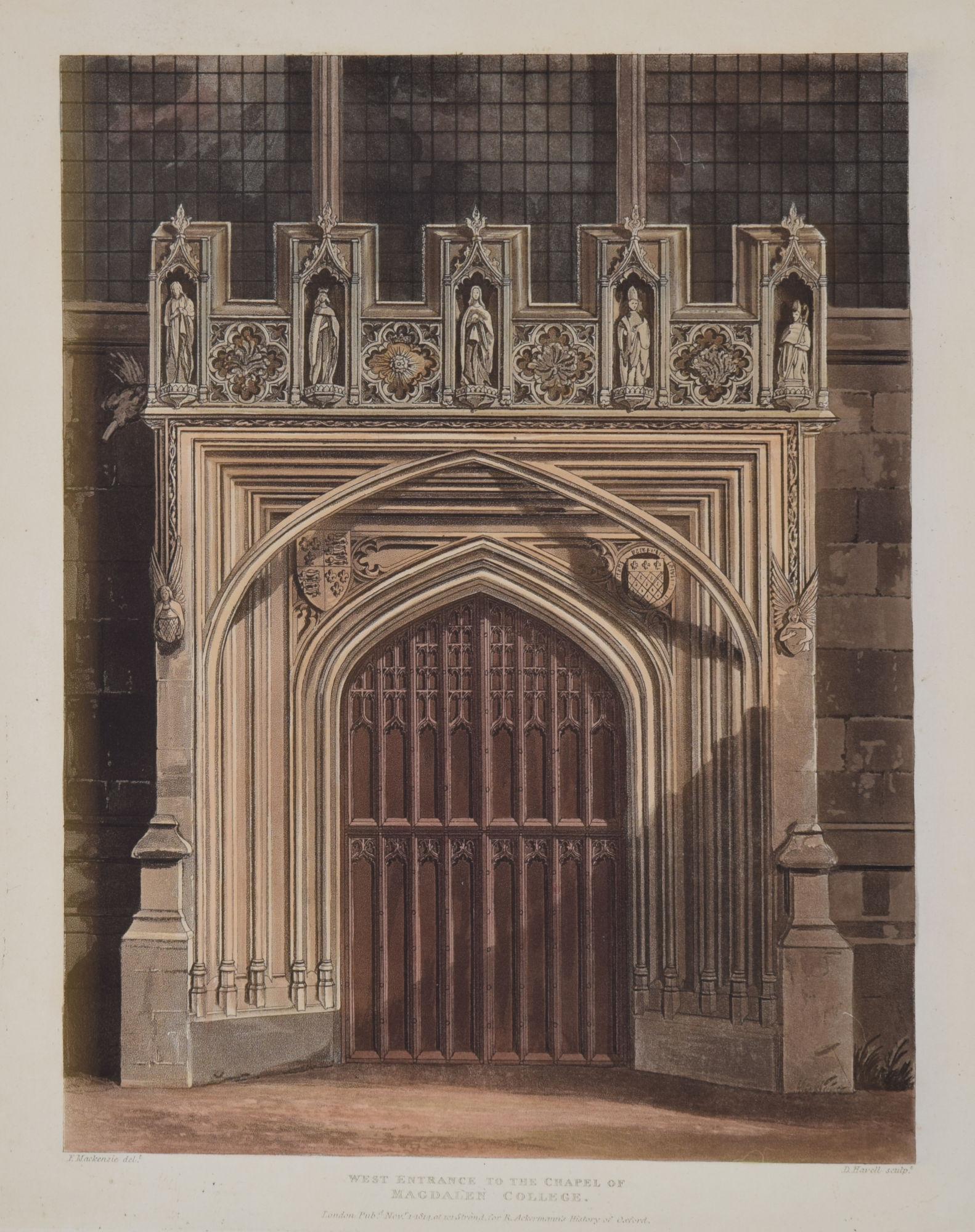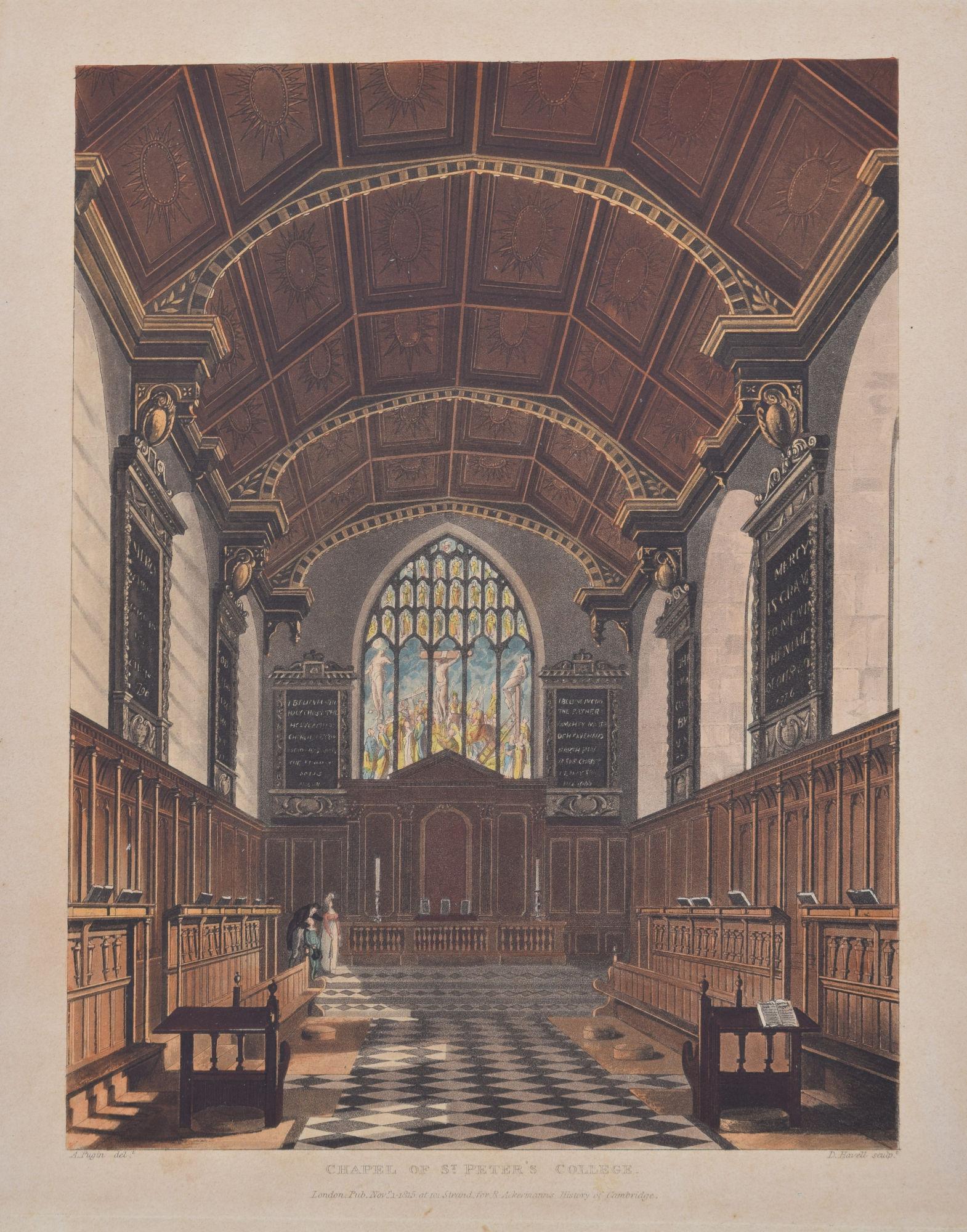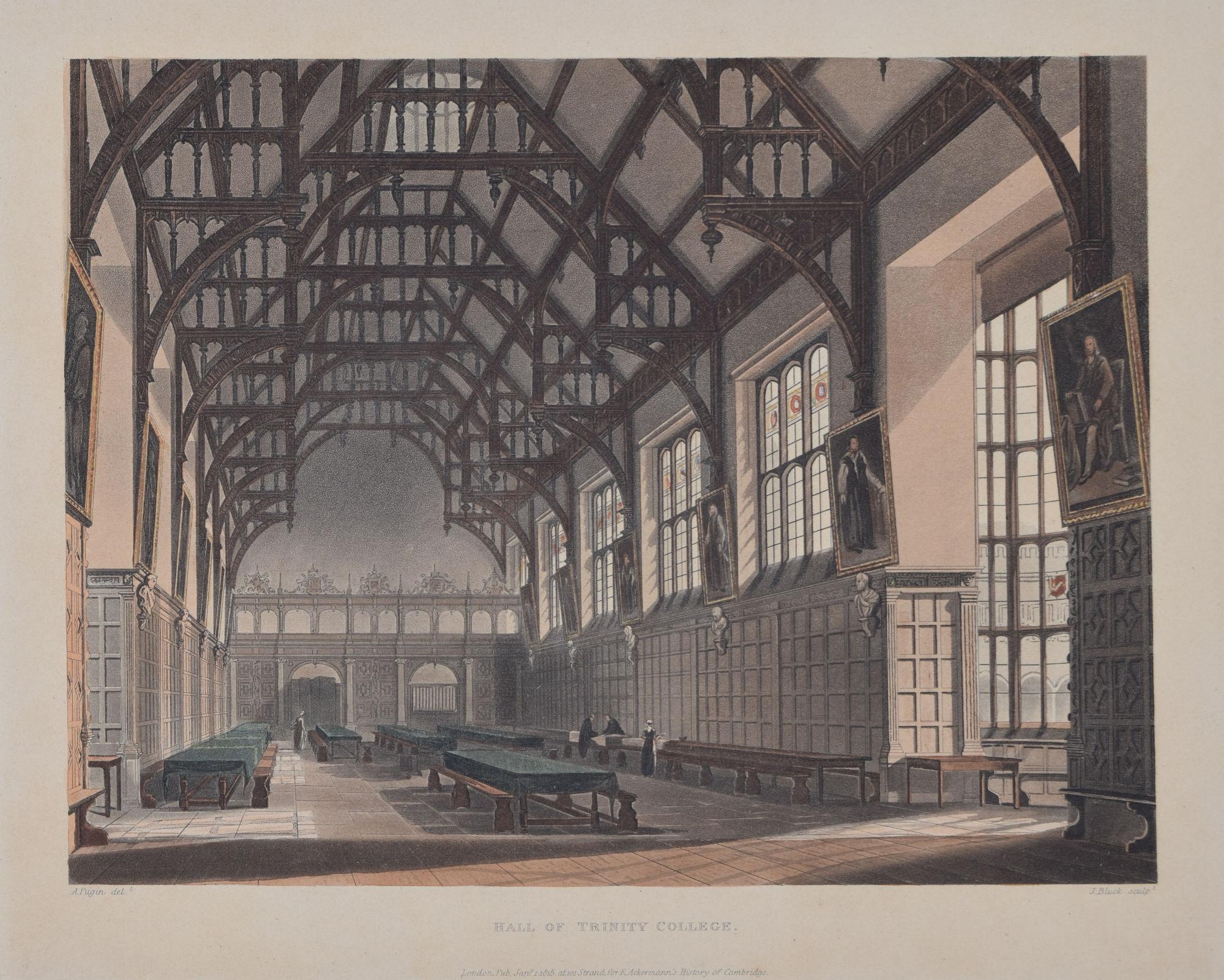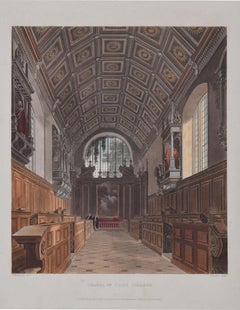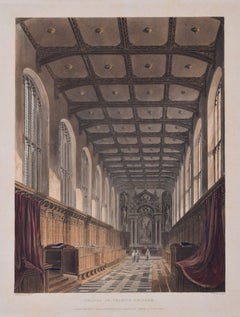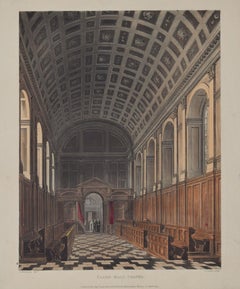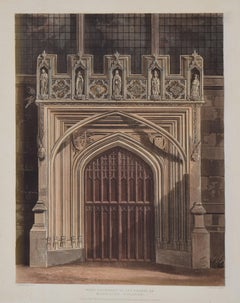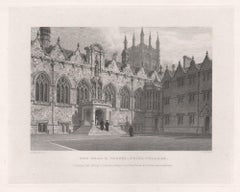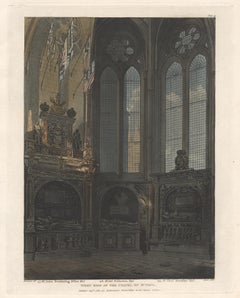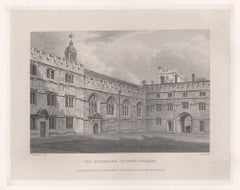Items Similar to Chapel of All Souls College, Oxford engraving by Joseph Stadler for Ackermann
Want more images or videos?
Request additional images or videos from the seller
1 of 4
Joseph Constantine StadlerChapel of All Souls College, Oxford engraving by Joseph Stadler for Ackermann1815
1815
$306.44
£225
€263.70
CA$429.55
A$473.27
CHF 244.99
MX$5,698.25
NOK 3,102.18
SEK 2,914.31
DKK 1,968.82
About the Item
To see our other Oxford and Cambridge pictures, including an extensive collection of works by Ackermann, scroll down to "More from this Seller" and below it click on "See all from this Seller" - or send us a message if you cannot find the view you want.
Joseph Constantine Stadler (1755 - 1828) after Frederick Mackenzie (1788 - 1854)
The Chapel of All Souls College, Oxford (1814)
Hand-coloured aquatint
29.5 x 21 cm
Published by Rudolph Ackermann (1764 - 1834).
An engraving of All Souls' chapel. All Souls College was founded in 1437 by Henry Chichele, Archbishop of Canterbury, to serve as a memorial to Henry V and the English dead in the Hundred Years War. The Front Quad appears virtually unchanged since it was first built in the years 1438-1343, thanks to a sympathetic Victorian restoration. The chapel was modelled after that of New College, where Chichele was a Member. It has a superb hammer-beam roof, excellent medieval stained glass, and a large number of original stalls. All services in the chapel are according to the Book of Common Prayer; the King James Bible is also used rather than more modern translations.
Frederick Mackenzie (circa 1788 - 1854) was a British watercolourist and architectural draughtsman. He first exhibited at the Royal Academy in 1804, and contributed eleven drawings between that year and 1828. He contributed to the Society of Painters in Water Colours exhibitions from 1813, becoming an associate in 1822, and a full member the following year. From 30 November 1831 until, his death he was treasurer to the society. In later life Mackenzie was no longer commissioned to illustrate books.
Joseph Constantine Stadler was a prolific German émigré engraver of images after his contemporaries - here, 18th-century English landscape painter and diarist Joseph Farington. Stadler's engravings are wide-ranging in subject matter and include landscapes, seascapes and portraits, as well as military, sporting and decorative subjects. Stadler was employed by the leading print publisher of the time, John Boydell. Stadler lived in Knightsbridge when he died at the age of 73.
Rudolph Ackermann was an Anglo-German bookseller, inventor, lithographer, publisher and businessman. In 1795 he established a print-shop and drawing-school at 96 Strand. Here Ackermann set up a lithographic press and began a trade in prints. He later began to manufacture colours and thick carton paper for landscape and miniature painters. Within three years the premises had become too small and he moved to 101 Strand, in his own words "four doors nearer to Somerset House", the seat of the Royal Academy of Arts. Between 1797 and 1800 Ackermann rapidly developed his print and book publishing business, encompassing many different genres including topography, caricature, portraits, transparencies and decorative prints.
- Creator:Joseph Constantine Stadler (1780 - 1822)
- Creation Year:1815
- Dimensions:Height: 11.62 in (29.5 cm)Width: 8.27 in (21 cm)
- Medium:
- Movement & Style:
- Period:
- Framing:Framing Options Available
- Condition:Good. Some age toning.
- Gallery Location:London, GB
- Reference Number:1stDibs: LU795314945882
About the Seller
4.8
Vetted Professional Seller
Every seller passes strict standards for authenticity and reliability
Established in 2014
1stDibs seller since 2017
360 sales on 1stDibs
Typical response time: 6 hours
- ShippingRetrieving quote...Shipping from: London, United Kingdom
- Return Policy
Authenticity Guarantee
In the unlikely event there’s an issue with an item’s authenticity, contact us within 1 year for a full refund. DetailsMoney-Back Guarantee
If your item is not as described, is damaged in transit, or does not arrive, contact us within 7 days for a full refund. Details24-Hour Cancellation
You have a 24-hour grace period in which to reconsider your purchase, with no questions asked.Vetted Professional Sellers
Our world-class sellers must adhere to strict standards for service and quality, maintaining the integrity of our listings.Price-Match Guarantee
If you find that a seller listed the same item for a lower price elsewhere, we’ll match it.Trusted Global Delivery
Our best-in-class carrier network provides specialized shipping options worldwide, including custom delivery.More From This Seller
View AllChapel of Caius College, Cambridge engraving by Joseph Stadler for Ackermann
Located in London, GB
To see our other Oxford and Cambridge pictures, including an extensive collection of works by Ackermann, scroll down to "More from this Seller" and below it click on "See all from th...
Category
1810s Realist Prints and Multiples
Materials
Aquatint
Chapel of Trinity College, Cambridge engraving by John Bluck for Ackermann
Located in London, GB
To see our other Oxford and Cambridge pictures, including an extensive collection of works by Ackermann, scroll down to "More from this Seller" and below it click on "See all from th...
Category
1810s Realist Prints and Multiples
Materials
Aquatint
Clare College, Cambridge Chapel engraving by Joseph Stadler for Ackermann
Located in London, GB
To see our other Oxford and Cambridge pictures, including an extensive collection of works by Ackermann, scroll down to "More from this Seller" and below it click on "See all from th...
Category
1810s Realist Prints and Multiples
Materials
Aquatint
Chapel of Magdalen College, Oxford engraving by Havell for Ackermann
Located in London, GB
To see our other Oxford and Cambridge pictures, including an extensive collection of works by Ackermann, scroll down to "More from this Seller" and below it click on "See all from th...
Category
1810s Realist Prints and Multiples
Materials
Aquatint
Peterhouse, Cambridge 'Chapel of St Peter's College' engraving by Havell
Located in London, GB
To see our other Oxford and Cambridge pictures, including an extensive collection of works by Ackermann, scroll down to "More from this Seller" and below it click on "See all from th...
Category
1810s Interior Prints
Materials
Engraving, Aquatint
Trinity College, Cambridge Hall engraving by Bluck after Pugin for Ackermann
Located in London, GB
To see our other Oxford and Cambridge pictures, including an extensive collection of works by Ackermann, scroll down to "More from this Seller" and below it click on "See all from th...
Category
1810s Prints and Multiples
Materials
Aquatint, Engraving
You May Also Like
The Hall & Chapel, Oriel College. Oxford University. Antique C19th engraving
Located in Melbourne, Victoria
'The Hall & Chapel, Oriel College'
Engraving by John Le Keux after Frederick Mackenzie, 1837. From James Ingram's 'Memorials of Oxford'.
135mm by 175mm ...
Category
19th Century Naturalistic Landscape Prints
Materials
Engraving
West Side of the Chapel of St Paul, Westminster Abbey, architecture aquatint
By John Bluck (active 1791-1819) after Frederick Mackenzie (1788-1854)
Located in Melbourne, Victoria
Colour aquatint by John Bluck (active 1791-1819) after Frederick Mackenzie (1788-1854).
Architectural interior with superb original colour. From 'Westminster Abbey', published by Ru...
Category
Early 19th Century Naturalistic Landscape Prints
Materials
Engraving, Etching, Aquatint
West View of St Nicholas Chapel, Westminster Abbey, architecture aquatint
Located in Melbourne, Victoria
Colour aquatint by John Bluck (active 1791-1819) after Auguste Pugin (1762-1832).
Architectural interior with superb original colour. From 'Westminster Abbey', published by Rudolf A...
Category
Early 19th Century Naturalistic Landscape Prints
Materials
Engraving, Etching, Aquatint
The Quadrangle of Jesus College. Oxford University. Antique C19th engraving
Located in Melbourne, Victoria
'The Quadrangle of Jesus College'
Engraving by John Le Keux after Frederick Mackenzie, 1837. From James Ingram's 'Memorials of Oxford'.
135mm by 175mm (...
Category
19th Century Naturalistic Landscape Prints
Materials
Engraving
Magdalen Hall. Oxford University. Antique C19th engraving
Located in Melbourne, Victoria
'Magdalen Hall'
Engraving by John Le Keux after Frederick Mackenzie, 1837. From James Ingram's 'Memorials of Oxford'.
135mm by 175mm (platemark)
200mm ...
Category
19th Century Naturalistic Landscape Prints
Materials
Engraving
Antique Print with Inside View of Magdalen Chapel, Winchester, Hampshire, 1790
Located in Langweer, NL
An antique line engraving by J. Basire after J. Schnebbelie, published in 1790. The Magdalen Chapel is located in the Cowgate in Edinburgh. The Chapel was built between 1541 and 1544 by Janet Rynd, widow of Michael MacQueen (died 1537), who had left money for this purpose. The building was to be the new chapel for the Incorporation of Hammermen and was to include accommodation for a chaplain and also an almshouse for seven Bedesmen (poor men) ‘who should continually pour forth prayers to Almighty God’.
Category
Antique Late 18th Century Prints
Materials
Paper
$156 Sale Price
20% Off
More Ways To Browse
Henry V
All Souls College
Keith Haring 1984
Leroy Neiman Signed
Marc Chagall Jerusalem Windows
Marchal Poster
Mark Kostabi On Sale
Michelangelo Original
Nara Lithograph
New Coke
Notre Dame Etching
Original Intaglio
Original Vintage Bicycle Posters
Paul K
Picasso 50
Picasso Le Peintre
Queen Elizabeth Pop Art
Robert Longo Lithographs

